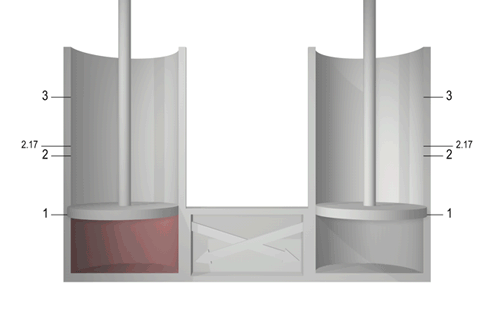|
|
Theoretical engine that can run in a vacuum and never exhausts heat?
A fully enclosable heat engine. This version uses incremental conversion, dimenishing returns, so isn't practical. It is a thought experiment to demonstrate there is no practical limit less than 100%.
This heat engine will run in a vacuum, never needs additional vapor, or a cold source.
Running in a vacuum simply means adding a weight to the pistons, instead of a pressure envelope. The weight is indistinguishable to the engine from a pressure envelope, if the cylinders are never opened for vapor transfer to the outside world.
The diagram below depends on the heat swapping device
here.
Transient

To begin, a "full" heat load is placed in the first piston, in this case 2 units of heat, or twice the ambient heat already in the system.
|
Steady State

In the steady state, the unused heat is transferred to the unexpanded piston, and supplemental heat added. This leaves the original piston with the original temperature. 0.83 units is converted to 0.83 units of work inside the piston. The opposite piston is then unexpanded, with 2.17 total heat units. All that is needed to bring it to the same state as the first piston, is the addition of 0.83 units of heat. The system continuously produces work, never exhausts heat.
Fine print
|
|


